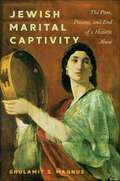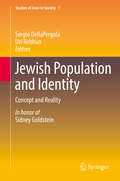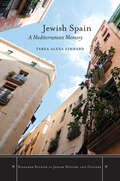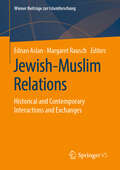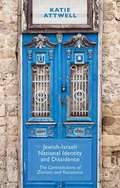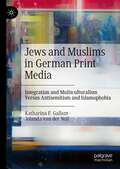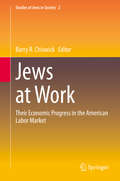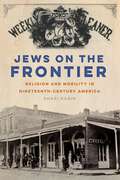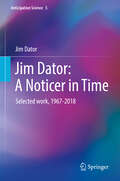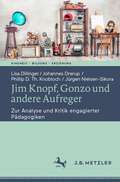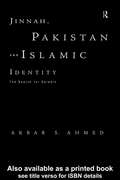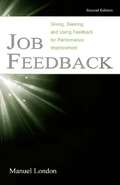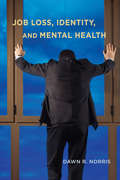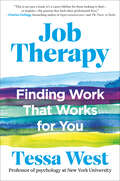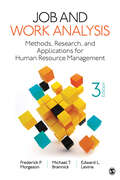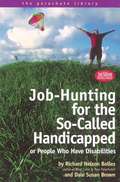- Table View
- List View
Jewish Marital Captivity: The Past, Present, and End of a Historic Abuse
by Shulamit S. MagnusSolutions to divorce abuse in Jewish societiesJewish Marital Captivity centers on the experience of women encountering systemic disadvantage in rabbinic marriage and divorce throughout Jewish history and across the map of Jewish life. In rabbinic law, marriage is a unilateral act by the husband, making divorce, similarly, the husband’s sole prerogative, in which his conscious will is also sacrosanct. Abuse necessarily follows, and has been the case from earliest recorded history when husbands abandoned wives, perished on business trips or in war or criminal incidents, or maliciously refused wives a rabbinic writ of divorce (get), or extorted for one, leaving wives trapped in marriage, including to dead men. There is no time limit to this state. Women in such marital captivity, without a husband’s economic partnership, or divorce or death settlements, yet unfree to contract other marriages, suffered devastating social, economic, and psychological hardship, as did their children. Women’s marital captivity has been treated as an issue in rabbinic law but has not, until now, been studied as a problem in Jewish societies across time and place, with a focus on the predicament and behavior of women.Jewish Marital Captivity is a social history of this problem from the seventh century to the present across multiple Jewish communities, focusing on the interaction of law and social reality. Magnus documents a pattern of assertive and transgressive actions by pious and rebellious women in traditional Jewish societies to escape marital captivity, often, with the assistance of male kin, also probing why such behavior emerged in pre-modern, patriarchal societies. She charts women’s role in the emergence of reforms in the medieval era offering women significant protections in marriage and divorce, and rabbinic backlash against these advances. This backlash was codified and its legal rulings are enacted to this day in rabbinic courts in the US and other Diaspora communities and in Israel, which lacks civil marriage and divorce and where Jewish citizens can only get divorced in rabbinic courts. It combines a sweeping history of Jewish women’s marital captivity with an analysis of the problem’s systemic nature, however personally and individually women experience it, and with a critique of current policy as seeking to manage and thus, perpetuate, rather than end the abuse. It applies the lessons of the history uncovered to propose solutions to what Magnus presents not as an Orthodox or an Israeli problem, but a Jewish one.
Jewish Population and Identity: Concept and Reality (Studies of Jews in Society #1)
by Uzi Rebhun Sergio DellaPergolaThis book examines the fundamentals of Jewish demography and sociology around the world. It is not only concerned with documenting patterns of population change but also with an intriguing and ever-present issue like "Who is a Jew?" The latter transcends the limits of quantitative assessment and deeply delves into the nature, boundaries, and quality of group identification. A growing challenge is how to bridge between concept – related to ideals and theory – and reality – reflecting field research. Divided into six sections, the book discusses historical demography, immigration and settlement, population dynamics, social stratification and economy, family and Jewish identity in the U.S., and Jewish identity in Israel. The volume represents the dynamic and diverse nature of the study of world and local Jewish populations. It shows how that field of study provides an important contribution to the broader and now rapidly expanding study of religious and ethnic groups. Scholars in disciplines such as history, geography, sociology, economics, political science, and especially demography follow and analyze the social and cultural patterns of Jews in different places around the globe, at various times, and from complementary perspectives. They make use of historical sources that have recently become accessible, utilize new censuses and surveys, and adopt advanced analytical methods. While some of their observations attest to consistency in the Jews’ demographic and identificational patterns, others evolve and ramify in new directions that reflect general processes in the areas and societies that Jews inhabit, internal changes within Jewish communities, and intergenerational trends in personal preferences of religious and ethnic orientations. This volume brings together contributions from scholars around the world and presents new and updated research and insights.
Jewish Spain: A Mediterranean Memory
by Tabea Alexa LinhardWhat is meant by "Jewish Spain"? The term itself encompasses a series of historical contradictions. No single part of Spain has ever been entirely Jewish. Yet discourses about Jews informed debates on Spanish identity formation long after their 1492 expulsion. The Mediterranean world witnessed a renewed interest in Spanish-speaking Jews in the twentieth century, and it has grappled with shifting attitudes on what it meant to be Jewish and Spanish throughout the century. At the heart of this book are explorations of the contradictions that appear in different forms of cultural memory: literary texts, memoirs, oral histories, biographies, films, and heritage tourism packages. Tabea Alexa Linhard identifies depictions of the difficulties Jews faced in Spain and Northern Morocco in years past as integral to the survival strategies of Spanish Jews, who used them to make sense of the confusing and harrowing circumstances of the Spanish Civil War, the Francoist repression, and World War Two. Jewish Spain takes its place among other works on Muslims, Christians, and Jews by providing a comprehensive analysis of Jewish culture and presence in twentieth-century Spain, reminding us that it is impossible to understand and articulate what Spain was, is, and will be without taking into account both "Muslim Spain" and "Jewish Spain."
Jewish-Muslim Relations: Historical and Contemporary Interactions and Exchanges (Wiener Beiträge zur Islamforschung)
by Ednan Aslan Margaret RauschThis multidisciplinary volume unites research on diverse aspects of Jewish-Muslim relations, exchanges and coexistence across time including the Abrahamic tradition enigma, Jews in the Qur’an and Hadith, Ibn al-‘Arabi and the Kabala, comparative feminist theology, Jews, Christians, Muslims and the Gospel of Barnabas, harmonizing religion and philosophy in Andalusia, Jews and Muslims in medieval Christian Spain, Israeli Jews and Muslim and Christian Arabs, Jewish-Muslim coexistence on Cyprus, Muslim-Jewish dialogues in Berlin and Barcelona, Jewish-Christian-Muslim trialogues and teleology, Jewish and Muslim dietary laws, and Jewish and Muslim integration in Switzerland and Germany.
Jewish-israeli National Identity And Dissidence
by Katie AttwellThis unique book provides a critical perspective on identity in questioning how Israeli Jews manage and manifest their concern for the Palestinian Other, eschewing presenting identities as concrete and, rather, examines their creation through discourse. Zionism and the Israeli state have constructed a Jewish national identity premised on demonisation of the Other. This book explores how internal critics use alternative discourses of identity to re-imagine this Jewish-Israeli national identity, and considers how they might fail. It combines a rigorous theoretical analysis of nationalism with an engaging examination of the identifications and contradictions of eleven Jewish-Israeli individuals. Featuring, among others, high profile journalist Gideon Levy, veteran maverick Uri Davis and literary novelist Dorit Rabinyan, Attwell provides a revealing insight into national identity, political dissent, conflict and resistance.
Jews and Intermarriage in Nazi Austria
by Evan Burr BukeyEvan Burr Bukey explores the experience of intermarried couples - marriages with Jewish and non-Jewish partners - and their children in Vienna after Germany's seizure of Austria in 1938. These families coped with changing regulations that disrupted family life, pitted relatives against each other, and raised profound questions about religious, ethnic, and national identity. Bukey finds that although intermarried couples lived in a state of fear and anxiety, many managed to mitigate, delay, or even escape Nazi sanctions. Drawing on extensive archival research, his study reveals how hundreds of them pursued ingenious strategies to preserve their assets, to improve their "racial" status, and above all to safeguard the position of their children. It also analyzes cases of intermarried partners who chose divorce as well as persons involved in illicit liaisons with non-Jews. Jews and Intermarriage in Nazi Austria concludes that although most of Vienna's intermarried Jews survived the Holocaust, several hundred Jewish partners were deported to their deaths and children of such couples were frequently subjected to Gestapo harassment.
Jews and Muslims in German Print Media: Integration and Multiculturalism Versus Antisemitism and Islamophobia
by Katharina F. Gallant Jolanda van der NollThis book uses a comparative research design to analyze the reporting on the Jewish minority and the Muslim minority in German newspapers from 2010-2019, asking whether minorities are truly treated as equals in the reporting of the mainstream German media. After providing historical and socio-political context for both groups as minority populations in Germany, the authors make use of qualitative and quantitative methods to examine sentiment and determine whether the media demonstrates a unifying or a well-differentiated portrayal of the two groups. The findings show that reporting on these groups is not as unbiased as many in Germany believe. Drawing on frameworks including the needs-based model of reconciliation, the revised integrated threat theory, and the model of acculturation strategies, the book then discusses the implications for both journalistic reporting and broader social policies in support of a constructive encounter of dominant andnon-dominant groups in a diverse society. This book will be of interest to scholars and students in the field of migration, integration and intergroup relations, as well as those in communication, media studies, and discourse analysis.
Jews at Work: Their Economic Progress in the American Labor Market (Studies of Jews in Society #2)
by Barry R. ChiswickThis book addresses the educational, occupational, and income progress of Jews in the American labor market. Using theoretical and statistical findings, it compares the experience of American Jews with that of other Americans, from the middle of the 19th century through the 20th and into the early 21st century.Jews in the United States have been remarkably successful; from peddlers and low-skilled factory workers, clearly near the bottom of the economic ladder, they have, as a community, risen to the top of the economic ladder. The papers included in this volume, all authored or co-authored by Barry Chiswick, address such issues as the English language proficiency, occupational attainment and earnings of Jews, educational and labor market discrimination against Jews, life cycle and labor force participation patterns of Jewish women, and historical and methodological issues, among many others. The final chapter analyzes alternative explanations for the consistently high level of educational and economic achievement of American Jewry over the past century and a half. The chapters in this book also develop and demonstrate the usefulness of alternative techniques for identifying Jews in US Census and survey data where neither religion nor Jewish ethnicity is explicitly identified. This methodology is also applicable to the study of other minority groups in the US and in other countries.
Jews on the Frontier: Religion and Mobility in Nineteenth-Century America (North American Religions)
by Shari RabinNational Jewish Book Award Winner: An &“enlightening&” history of how Jews forged their own religious culture as they ventured into the American wilderness (Choice).Finalist, 2017 Sami Rohr Prize for Jewish Literature, presented by the Jewish Book CouncilJews on the Frontier offers a religious history that begins in an unexpected place: on the road. Shari Rabin recounts the journey of Jewish people as they left Eastern cities and ventured into the American West and South during the nineteenth century. It brings to life the successes and obstacles of these travels, from the unprecedented economic opportunities to the anonymity and loneliness that complicated the many legal obligations of traditional Jewish life. Without government-supported communities or reliable authorities, where could one procure kosher meat? Alone in the American wilderness, how could one find nine co-religionists for a minyan (prayer quorum)? Without identity documents, how could one really know that someone was Jewish? Rabin argues that Jewish mobility during this time was pivotal to the development of American Judaism. In the absence of key institutions like synagogues or charitable organizations which had played such a pivotal role in assimilating East Coast immigrants, ordinary Jews on the frontier created religious life from scratch, expanding and transforming Jewish thought and practice.Jews on the Frontier vividly recounts the story of a neglected era in American Jewish history, offering a new interpretation of American religions, rooted not in congregations or denominations but in the politics and experiences of being on the move. This book shows that by focusing on everyday people, we gain a more complete view of how American religion has taken shape. This book follows a group of dynamic and diverse individuals as they searched for resources for stability, certainty, and identity in a nation where there was little to be found. &“Scholars of immigration have toiled for years on the question of how mobility affects nationalities and group identities alike…Rabin gives this framework an interesting twist by investigating mobility&’s influence on religion.&” ― American Jewish Archives Journal
Jews, Germans, Memory: Reconstructions of Jewish Life in Germany (Social History, Popular Culture, And Politics In Germany)
by Y. Michal BodemannHow was it possible that a new and sizeable Jewish community developed after the Holocaust in Germany of all places? Jews, Germans, Memory undertakes to assess the past, present, and future of German-Jewish relations in the light of recent political changes and the opening up of historical resources. This welcome new volume investigates how the groundwork was laid for the new Jewish community in the post-war period, with different objectives by Jewish leaders and German politicians. Its contributors touch upon history, literature, the media, ethnicity, politics, and social movements, and attempt to answer the question of how Jews are socially constructed and how the glorious German Jewish past and the Holocaust have been remembered in the course of recent decades. In recent years, German Jewry has seen fundamental transformations with the influx from Eastern Europe and a new leadership in the community. A new self-definition, even self-assurance and reappraisal in Israel and elsewhere, has evolved. Historians, scholars of cultural studies, and those interested in debates on memory and ethnicity will all find something of interest in this diverse volume. Jews, Germans, Memory joins in debate Michael Brenner, Micha Brumlik, Dan Diner, Cilly Kugelmann, and Martin Löw-Beer, among the most prominent younger Jewish intellectuals in Germany today, with others who have long observed Germany from both inside and outside: Y. Michal Bodemann, John Borneman, Andrei Markovits, Robin Ostrow, Moishe Postone, Frank Stern, and Jack Zipes. Y. Michal Bodemann is Professor of Sociology, University of Toronto.
Jim Dator: Selected work, 1967-2018 (Anticipation Science #5)
by Jim DatorThis book features a selection of the published writings and public presentations of Jim Dator. Most of the chapters are directly concerned with futures studies and ideas about the futures. The topic covers many disciplines and subjects. It is also concerned with many different parts of the world, even Mars. In addition, a few of the earlier papers contained here are about more conventional topics in politics and religion.The collection spans a more than 50 year period of thought, reflection, and instruction. In particular, the papers examine six main topics. These include meditations on the very nature of future studies, visions of preferred futures, ideas about alternative futures, and details on future theories and methods. Coverage also considers such specific topics as AI and robots, the environment, food, culture, energy, families, future generations, and more.Overall, these papers help readers gain insight into what it takes to weave together alternative images of the future in useful ways. They also reveal cross-disciplinary patterns in key fields of human endeavor that will help readers better understand trends and emerging issues.
Jim Knopf, Gonzo und andere Aufreger: Zur Analyse und Kritik engagierter Pädagogiken (Kindheit – Bildung – Erziehung. Philosophische Perspektiven)
by Johannes Drerup Jürgen Nielsen-Sikora Phillip D. Knobloch Lisa DillingerIn bildungspolitischen Diskussionen melden sich aktuell immer mehr Vertreter*innen politisch ambitionierter Pädagogiken zu Wort, die die pädagogische Nutzung ganz unterschiedlicher Kulturprodukte kritisieren, indem sie diese als Ausdruck von Rassismus, Sexismus, Kolonialismus oder Klassismus deuten. Bei solchen politisch und pädagogisch umkämpften Kulturprodukten handelt es sich beispielsweise um Kinderspielzeug, Dreadlocks oder Schokoladenverpackungen, um Kunstwerke, Fernsehserien, Gedichte und um Bücher. In dem Band werden diese engagierte Pädagogiken, die pädagogische und politische Vorgaben für den angemessenen und richtigen Umgang mit Kulturprodukten machen, anhand von Beispielen – vom Kinderbuch ‚Jim Knopf´ bis hin zu ‚Gonzo‘ aus der Muppetshow – aus der gebotenen Distanz analysiert und auf den Prüfstand gestellt.
Jinnah, Pakistan and Islamic Identity: The Search for Saladin
by Akbar AhmedEvery generation needs to reinterpret its great men of the past. Akbar Ahmed, by revealing Jinnah's human face alongside his heroic achievement, both makes this statesman accessible to the current age and renders his greatness even clearer than before. Four men shaped the end of British rule in India: Nehru, Gandhi, Mountbatten and Jinnah. We know a great deal about the first three, but Mohammed Ali Jinnah, the founder of Pakistan, has mostly either been ignored or, in the case of Richard Attenborough's hugely successful film about Gandhi, portrayed as a cold megalomaniac, bent on the bloody partition of India. Akbar Ahmed's major study redresses the balance. Drawing on history, semiotics and cultural anthropology as well as more conventional biographical techniques, Akbar S. Ahmad presents a rounded picture of the man and shows his relevance as contemporary Islam debates alternative forms of political leadership in a world dominated (at least in the Western media) by figures like Colonel Gadaffi and Saddam Hussein.
Job Evaluation: A Critical Review (Routledge Library Editions: Human Resource Management Ser. #27)
by Bryan LivyThis well-written and thoroughly illustrated description of the principles of job evaluation, first published in 1975, sets out to compare the relative usefulness and practical relevance of a wide range of methods within the overall context of remuneration policy and organisational effectiveness. The aim is to help the practising personnel specialist, in the knowledge of best current practice and the latest research. This book will also be of interest to students of business studies and human resource management.
Job Feedback: Giving, Seeking, and Using Feedback for Performance Improvement (Applied Psychology Ser.)
by Manuel LondonThis book discusses how people evaluate themselves, relate to others who give them feedback, and process information about others. It examines how feedback is given and received in teams and cross-cultural organizations, and explores the impact that feedback has on changing technologies.
Job Loss, Identity, and Mental Health
by Dawn R. NorrisOur jobs are often a big part of our identities, and when we are fired, we can feel confused, hurt, and powerless--at sea in terms of who we are. Drawing on extensive, real-life interviews, Job Loss, Identity, and Mental Health shines a light on the experiences of unemployed, middle-class professional men and women, showing how job loss can affect both identity and mental health. Sociologist Dawn R. Norris uses in-depth interviews to offer insight into the experience of losing a job--what it means for daily life, how the unemployed feel about it, and the process they go through as they try to deal with job loss and their new identities as unemployed people. Norris highlights several specific challenges to identity that can occur. For instance, the way other people interact with the unemployed either helps them feel sure about who they are, or leads them to question their identities. Another identity threat happens when the unemployed no longer feel they are the same person they used to be. Norris also examines the importance of the subjective meaning people give to statuses, along with the strong influence of society's expectations. For example, men in Norris's study often used the stereotype of the "male breadwinner" to define who they were. Job Loss, Identity, and Mental Health describes various strategies to cope with identity loss, including "shifting" away from a work-related identity and instead emphasizing a nonwork identity (such as "a parent"), or conversely "sustaining" a work-related identity even though he or she is actually unemployed. Finally, Norris explores the social factors--often out of the control of unemployed people--that make these strategies possible or impossible. A compelling portrait of a little-studied aspect of the Great Recession, Job Loss, Identity, and Mental Health is filled with insight into the identity crises that unemployment can trigger, as well as strategies to help the unemployed maintain their mental strength.
Job Quality in an Era of Flexibility: Experiences in a European Context (Routledge Studies in Employment Relations)
by Tommy Isidorsson Julia KubisaThis is the era of flexibility. Under constant pressure to be adaptable, organizations increasingly adopt employment practices such as zero-hours contracts, the casualization of the workforce and the use of temporary and agency labour. These flexible practices are central to debates about the changing nature of job quality and its causes, trends and consequences. Arguing that job quality is central to understanding contemporary work, this book explores the internal and external pressures for flexibility in workplaces, professions and sectors and how this pressure shapes workers’ experiences of job quality. By studying job quality dynamics via case studies from organizations and occupations in the UK, Poland, Belgium and Sweden, the volumes illustrates the diversity of practices and experiences, as well as market pressures and institutional arrangements which effect working lives. Finally, the editors propose a policy debate on the new concept "flexiquality" - a combination of flexibility and job quality that can be beneficial for both management and workers.
Job Satisfaction: From Assessment to Intervention
by Paul E. SpectorDistilling the vast literature on this most frequently studied variable in organizational behavior, Paul E. Spector provides students and professionals with a pithy overview of the research and application of job satisfaction. In addition to discussing the nature of and techniques for assessing job satisfaction, this text summarizes the findings regarding how people feel toward work, including cultural and gender differences in job satisfaction, personal and organizational antecedents, potential consequences, and interventions to improve job satisfaction. Students, researchers, and practitioners will particularly appreciate the extensive list of references and the Job Satisfaction Survey included in the Appendix. This book includes the latest research and new topics including the business case for job satisfaction, customer service, disabled workers, leadership, mental health, organizational climate, virtual work, and work-family issues. Further, paulspector.com features an ongoing series of blog articles, links to assessments mentioned in the book, and other resources on job satisfaction to coincide with this text. This book is ideal for professionals, researchers, and undergraduate and graduate students in industrial and organizational psychology and organizational behavior, as well as in specialized courses on job attitudes or job satisfaction..
Job Satisfaction: From Assessment to Intervention
by Paul E. SpectorDistilling the vast literature on this most frequently studied variable in organizational behavior, Paul E. Spector provides students and professionals with a pithy overview of the research and application of job satisfaction. In addition to discussing the nature of and techniques for assessing job satisfaction, this text summarizes the findings regarding how people feel toward work, including cultural and gender differences in job satisfaction, personal and organizational antecedents, potential consequences, and interventions to improve job satisfaction. Students, researchers, and practitioners will particularly appreciate the extensive list of references and the Job Satisfaction Survey included in the Appendix. This book includes the latest research and new topics including the business case for job satisfaction, customer service, disabled workers, leadership, mental health, organizational climate, virtual work, and work-family issues. Further, paulspector.com features an ongoing series of blog articles, links to assessments mentioned in the book, and other resources on job satisfaction to coincide with this text. This book is ideal for professionals, researchers, and undergraduate and graduate students in industrial and organizational psychology and organizational behavior, as well as in specialized courses on job attitudes or job satisfaction..
Job Therapy: Finding Work That Works for You
by Tessa WestA psychologist&’s guide to finding your most fulfilling job yetWhen we&’re unhappy in our jobs, we often attribute our frustration to a bad manager, boring tasks, and stressful workloads. But our dissatisfaction at work usually stems from a deeper psychological need that&’s not being met at work, like not getting the recognition you deserve.In Job Therapy, Dr. Tessa West helps you figure out the real reason you&’re unhappy and shows you how to find a new position in which you&’ll thrive, whether in a different role, company, or new industry altogether. Through her research interviewing thousands of people who have recently switched jobs or undergone career changes, she found there are five common sources of career frustration: having an identity crisis – does your sense of self no longer match your job?you&’ve drifted-apart – do you no longer recognize the job you once loved? you&’re torn between places – are you taking on too many roles at work, switching tasks too often, or stuck between two paths?you&’re the runner up – do you always feel like you keep coming in second? you&’re the underappreciated star – are you crushing it at work, but the people around you aren&’t recognizing your performance? Dr. West will guide you through a working week audit to help identify your unique psychological stressors and use that knowledge to understand what you want your future career to look like. Presenting cutting-edge insights on networking and hiring, from Dr. West&’s interviews with over 1,500 professional recruiters, Job Therapy will help you land your best role yet – one that guarantees happiness for years to come.
Job and Work Analysis: Methods, Research, and Applications for Human Resource Management
by Edward L. Levine Frederick P. Morgeson Michael T. BrannickJob and Work Analysis: Methods, Research, and Applications for Human Resource Management provides students and professionals alike with an in-depth exploration of job analysis. Job analysis encompasses a wide range of crucial topics that help us understand what people do at work and why. This one-of-a-kind text expertly unpacks the best job analysis methods and then illustrates how to apply these methods to solve some of the most common workplace problems. Readers will learn the best practices for helping people work smarter, improving hiring and training, making jobs safer, and providing a satisfying work environment. The new Third Edition includes new references, the latest research findings, and expanded discussions of competency models, teams, and O*NET.
Job and Work Analysis: Methods, Research, and Applications for Human Resource Management
by Edward L. Levine Frederick P. Morgeson Michael T. BrannickJob and Work Analysis: Methods, Research, and Applications for Human Resource Management provides students and professionals alike with an in-depth exploration of job analysis. Job analysis encompasses a wide range of crucial topics that help us understand what people do at work and why. This one-of-a-kind text expertly unpacks the best job analysis methods and then illustrates how to apply these methods to solve some of the most common workplace problems. Readers will learn the best practices for helping people work smarter, improving hiring and training, making jobs safer, and providing a satisfying work environment. The new Third Edition includes new references, the latest research findings, and expanded discussions of competency models, teams, and O*NET.
Job-Hunting for the So-Called Handicapped (Second Edition)
by Richard Nelson Bolles Dale S. BrownRichard Bolles' <i>What Color is your Parachute?</i> has helped millions of readers find their path in life, and now his creative approach to job-hunting is brought to bear on the specific challenges faced by job hunters with disabilities. In <i>Job-Hunting for the So-Called Handicapped</i>, Bolles and Dale Susan Brown guide readers through the often-frustrating, but ultimately rewarding process of securing independence in their lives and personal satisfaction in their careers. The authors begin by demystifying the intricacies of the ADA, describing in clear terms what the act does and does not guarantee disabled job hunters, and then move on to job-hunting strategies tailored specifically to people with disabilities.
Jobs That Could Kill You: True Stories of People Risking Their Lives to Make a Buck
by Tom JonesJobs That Could Kill You is a fascinating collection of candid and intimate conversations with forty-two men and women who describe in gripping detail how physical risk is a familiar companion in their working lives, and how they deal with it. In the oral history tradition of Studs Terkel, Jobs That Could Kill You will introduce you to:- Antron Brown as he launches his top fuel drag racer from zero to over 300 miles an hour in less than four seconds. - Justin McBride talking about the guts it takes to stay atop a raging 1,600-pound bull. - Jeff Gammons as he painfully remembers the terrifying screams of Hurricane Katrina drowning victims. - Cameron Begbie as he recalls fighting hand-to-hand against insurgents in Fallujah, Iraq. - Crab fisherman Matt Corriere, who describes the harrowing night when he was the sole survivor after the sinking of the fishing vessel Massacre Bay in icy Alaskan waters. - And dozens more!Jobs That Could Kill You reveals who these daring people are, what they will endure for a paycheck, and how they feel about their jobs. They speak for themselves, in their own words.
Jobs and Justice
by Carmela PatriasDespite acute labour shortages during the Second World War, Canadian employers--with the complicity of state officials--discriminated against workers of African, Asian, and Eastern and Southern European origin, excluding them from both white collar and skilled jobs. Jobs and Justice argues that, while the war intensified hostility and suspicion toward minority workers, the urgent need for their contributions and the egalitarian rhetoric used to mobilize the war effort also created an opportunity for minority activists and their English Canadian allies to challenge discrimination.Juxtaposing a discussion of state policy with ideas of race and citizenship in Canadian civil society, Carmela K. Patrias shows how minority activists were able to bring national attention to racist employment discrimination and obtain official condemnation of such discrimination. Extensively researched and engagingly written, Jobs and Justice offers a new perspective on the Second World War, the racist dimensions of state policy, and the origins of human rights campaigns in Canada.
